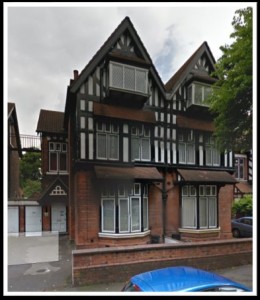April is a month noted for two things particularly: April Fool’s Day (“The first of April is the day we remember what we are the other 364 days of the year” – Mark Twain) and April showers. Who can forget the song from Bambi ‘Drip drip drop little April showers’?

[You’ll probably regret reading that. It’ll be an ear worm you’ll have in your head all day!]
Chaucer may not have had doe-eyed fawns in mind when he wrote: ‘Whan that Aprill with his shoures soote/ The droghte of March hath perced to the roote …’ in the Prologue to The Canterbury Tales but he summed up neatly the gentle little showers that are supposed to fall in April. It was probably those that Robert Browning had in mind when, in Home Thoughts from Abroad, he wished he was in England ‘now that April’s there’.
April in schools often brings the start of the summer term with the delicious thought of the ‘long summer hols’ to come. Fortunately for the sanity of teachers, April 1st is fleetingly brief and doesn’t always fall on a school day but most people can probably recall an April Fool’s trick perpetrated successfully on schoolchums. Sadly, it’s the sort of thing that doesn’t get recorded in the annals.
One particularly famous hoax, however, albeit not in a school, was the spaghetti tree Panorama report on April 1st 1957. Ignoring the ‘rule’ that tricks played after 12 midday don’t count, the television programme broadcast a spoof report from the Swiss canton of Ticino about harvesting spaghetti. Of course, at the time, this was not a dish many had tried at home. It wouldn’t work today!
“The last two weeks of March are an anxious time for the spaghetti farmer. There’s always the chance of a late frost which, while not entirely ruining the crop, generally impairs the flavour and makes it difficult to obtain top prices.”
The report was given greater authenticity with a discussion about the horrors inflicted on the crop by the spaghetti weevil – a dastardly little blighter which had wreaked havoc on crops in the past. Richard Dimbleby, who fronted the report, lent gravitas to the spoof which probably caused more viewers to be fooled than might otherwise have been, such was his authority. He concluded his report by declaring that ‘there’s nothing like real homegrown spaghetti.’ Following the programme, the BBC received many phone calls asking from where it might be possible to obtain their own spaghetti trees. The BBC gave up trying to explain and settled instead for telling them to take a sprig from an existing tree and plant it in a can of tomato paste.
And the connection to the School’s history? Well, it’s nothing if not contrived! Let us jump back in time a little to a young girl born just before the turn of the century. Marie Victoria Adams was born in 1897 and was always known in her family as Queenie. The family home at this time was 24 Selbourne Rd, then in Handsworth but now classed as Birmingham.

24 Selbourne Rd, courtesy of Google Earth Street View
After her father, a brass nail manufacturer in Birmingham, died, Queenie became a pupil at RMIG. We know she left the School in 1913 and, on average, pupils stayed for about 5-6 years so she probably arrived in about 1907. Unlike the school leaving age in National schools (which was 12-14), RMIG has always had a minimum leaving age of 15, which often became 16 and, at Head Governess’ request, might be 17. Queenie would have been 16 in 1913.
We don’t know exactly what she did after leaving school. The only certain occupation recorded for her is in 1939 when she is given as a shorthand typist. Both shorthand and typing lessons were undertaken at the School at this time but we can’t directly link Queenie to them. Obviously she must have learned shorthand somewhere and it might have been at school.
However, there is also the tantalising reference in her family history – and here’s the connection to the April Fool stunt – “she told me that she had been a nanny in the Dimbleby household when they lived in Teddington.” (The words of a family historian who knew her.) The opportunity when Any Questions was recorded at the School to ask Jonathan Dimbleby if he could confirm this was too great to resist. He could not recall Queenie but her family historian was unsure whether it was before or after Queenie’s marriage: i.e. before 1926 or after. The mention of Teddington, where Richard Dimbleby grew up, perhaps makes it a possibility that it was the older Dimbleby generation rather than the younger. Between 1913 and 1926 we have no specific trace of Queenie so perhaps she was indeed working as a nanny. Fast forward to 1932, and we can link Queenie to Teddington as she gave the address c/o Mrs Spencer Phillips, Denbigh House, Hampton Wick, in her OMGA membership. The fact that it is a ‘c/o’ address might suggest that Mrs Phillips was her employer but that is not known for certain. This house was completely rebuilt in 1936 by Mrs Phillips so the image of it may not be the same as the one Queenie knew. Today it is known as Denbigh Lodge.

So often in these pen portraits of past pupils, we know little of the personalities. We are fortunate in having a first-hand account by someone who actually knew her. Queenie, she recalled, had auburn hair, naturally wavy and thick.
“Grandma told me of the time the three girls, May, Queenie and Gran, went to the theatre and someone cut off Queenie’s plait which was hanging over the seat. Presumably they had a good price for it…”
Queenie also had a quick ear for music and played the piano – possibly something else she had learned at school although being able to play ‘by ear’ is a talent rather than a learned quality.
“Marie (Queenie to me) was my grandma’s cousin, younger by about 5 years. All the cousins seemed to have a close relationship. Queenie’s older sister May was Grandma’s best friend and eventually lived in the same road, as did Queenie’s mother and brother Ormsby (who emigrated to Canada) and Dorothy, known as Dolly, to whom Queenie was very close. They lived at 18 Windermere Rd Handsworth and Grandma lived at 25, with May eventually at 33!”

Views of Windermere Rd, from Google Earth street view.
18 Windermere was sold last in 2011 for £132,000.
Queenie married on 23 December 1926 at West Bromwich Registry Office. Sadly the marriage did not last and it may well be that her husband, who was a widower, really just wanted a live-in housekeeper and someone to look after his children. We will never know the truth as it was something Queenie never discussed. By 1932 Queenie was [back] in Teddington and her name is recorded in OMGA membership as Adams and not under her married name. It was almost as if she wished to draw a veil over it.
In 1939 she was living at 25 Windermere Rd. During the war, despite the danger from air raids, “she wouldn’t go in the shelter, maintaining that if you looked at all the bombed houses the stairs were still there so that was her little shelter – under the stairs.”

http://www.bbc.co.uk/news/uk-england-coventry-warwickshire-34746691
In the 1950s, she went to live in Antrobus Rd and had a bedsit there.

Antrobus Rd, courtesy of Google Earth Street View
“The last time I heard from her was in 1974, 5 years before she died. She was in a home [for the elderly] in Somerset Rd Handsworth, her sight was failing, she was doing a lot of baby knitting and had frequent visitors of nieces and nephews.”

Somerset Rd courtesy of Google Earth Street View
Despite her advancing years, we still capture something of her personality in her comments: she complained about ‘dear England going to ruin with … all the nitwits in Parliament’ and she ‘just liked to think of happy times 50 years ago’.
Marie Victoria White died in Dudley Rd Hospital on 6th April 1979 aged 82. Causes of death included cardiac failure, bronchitis, emphysema and coronary atheroma – in short, a tired body simply shutting down. Our family historian correspondent said of her
“She was a lovely lady and I remember her with great affection and wish I had known more about her but when you are young you just don’t ask those sort of questions which could be so relevant today.”
We don’t know what her view of the spaghetti tree hoax was but “she had a good sense of humour”.
I bet she roared with laughter!

https://uk.news.yahoo.com/april-fools–day–best-april-fools-pranks-ever-160640356.html
(Quotation in title from William Hamilton Gibson was an American illustrator, author and naturalist.)
